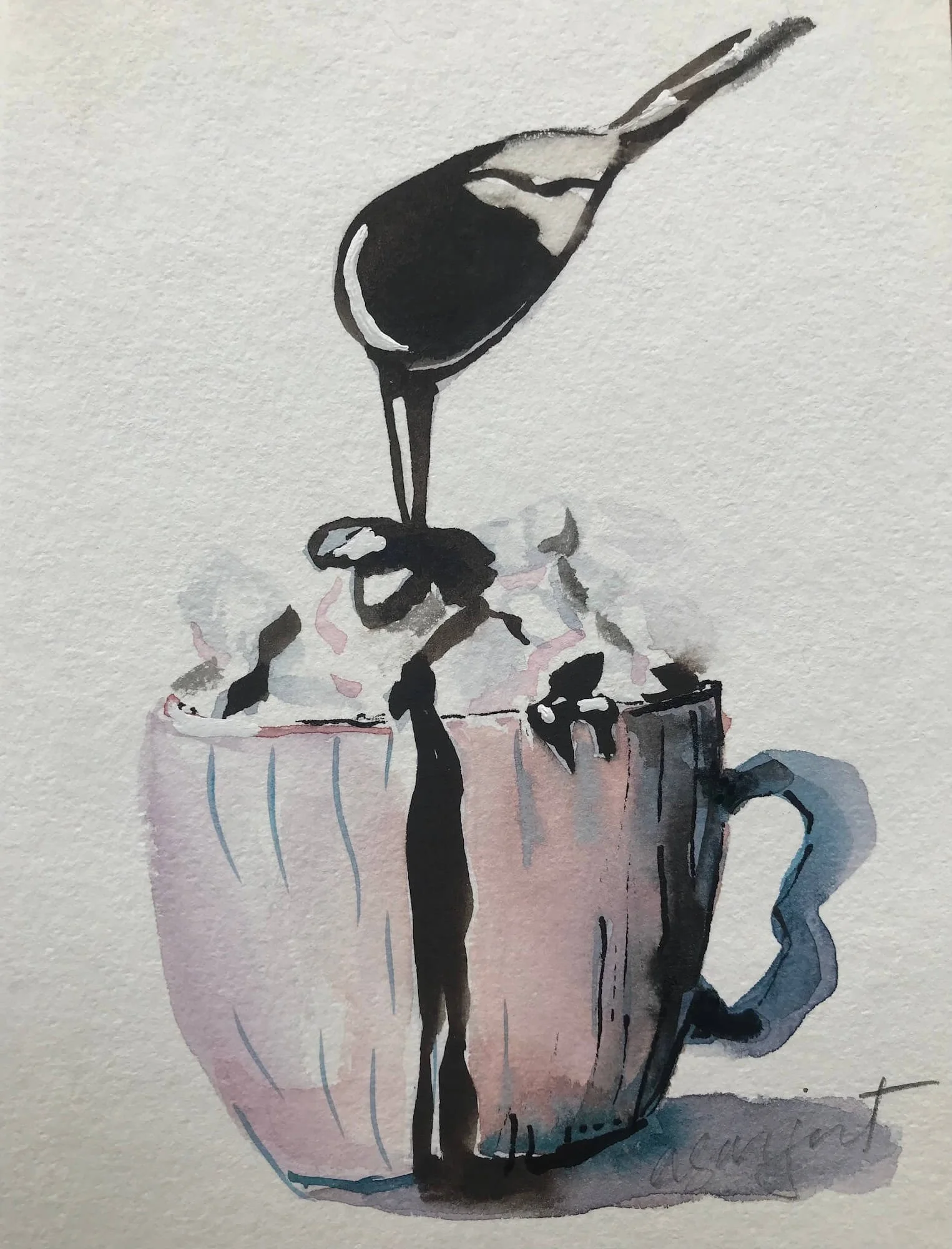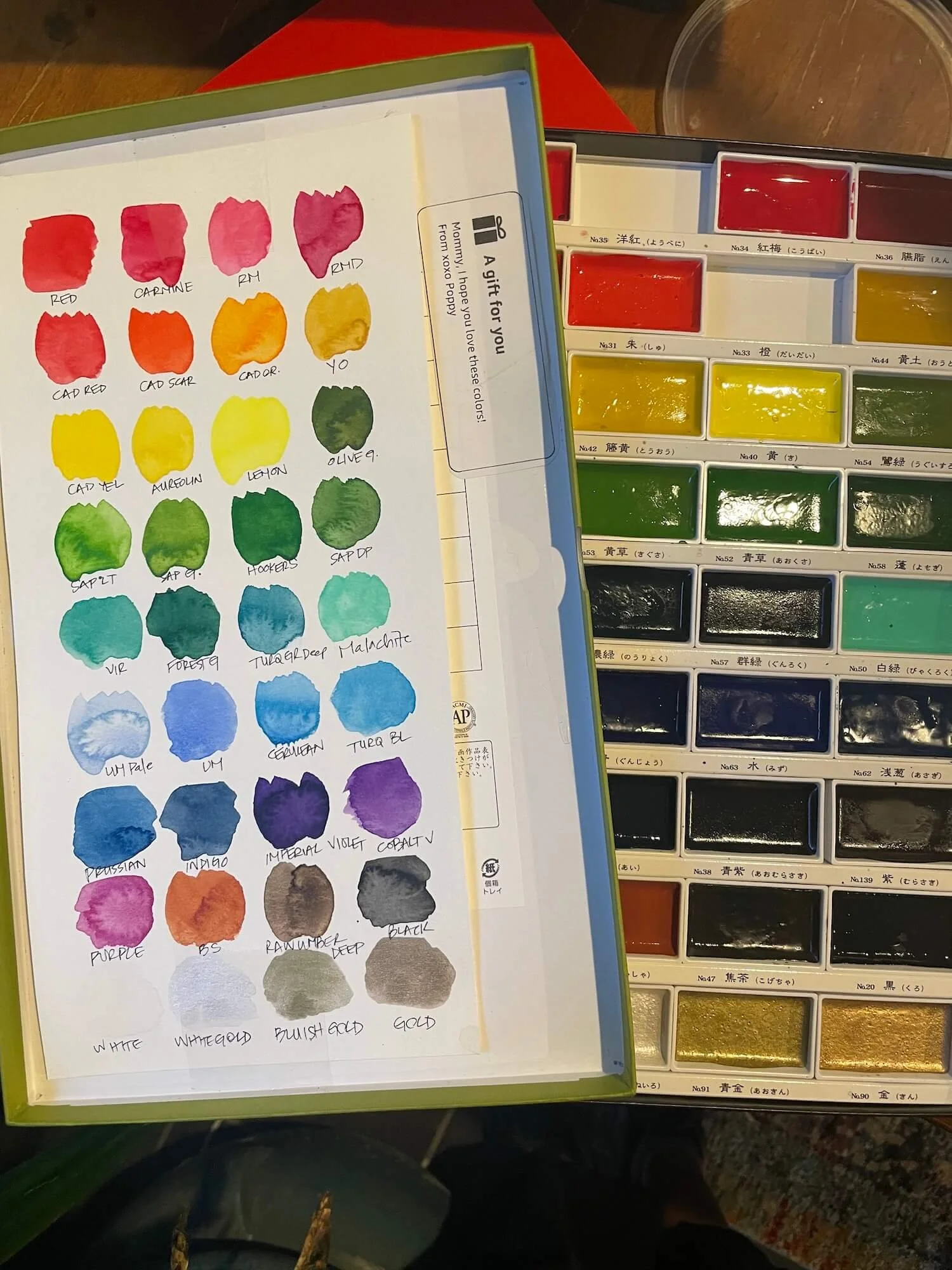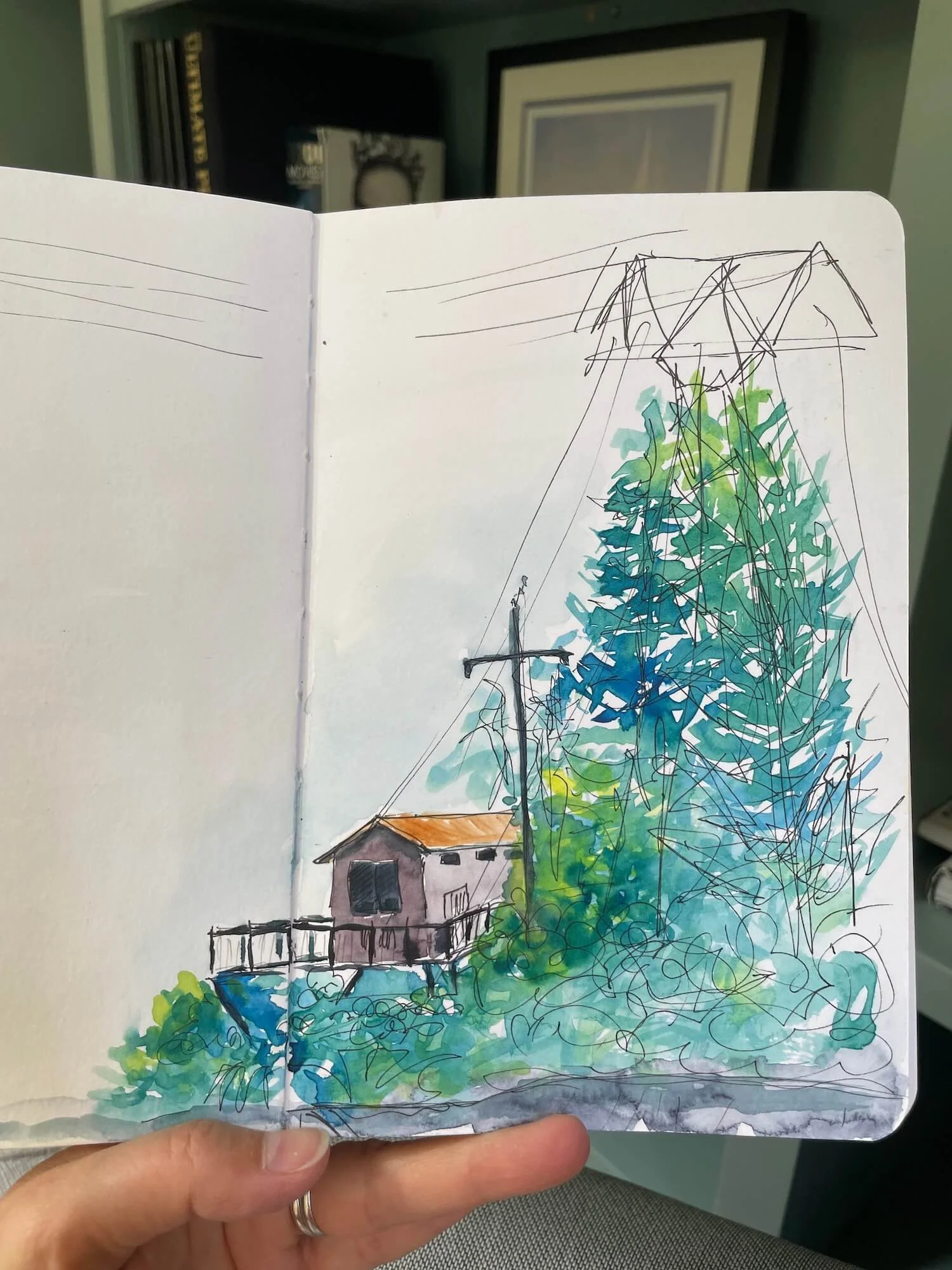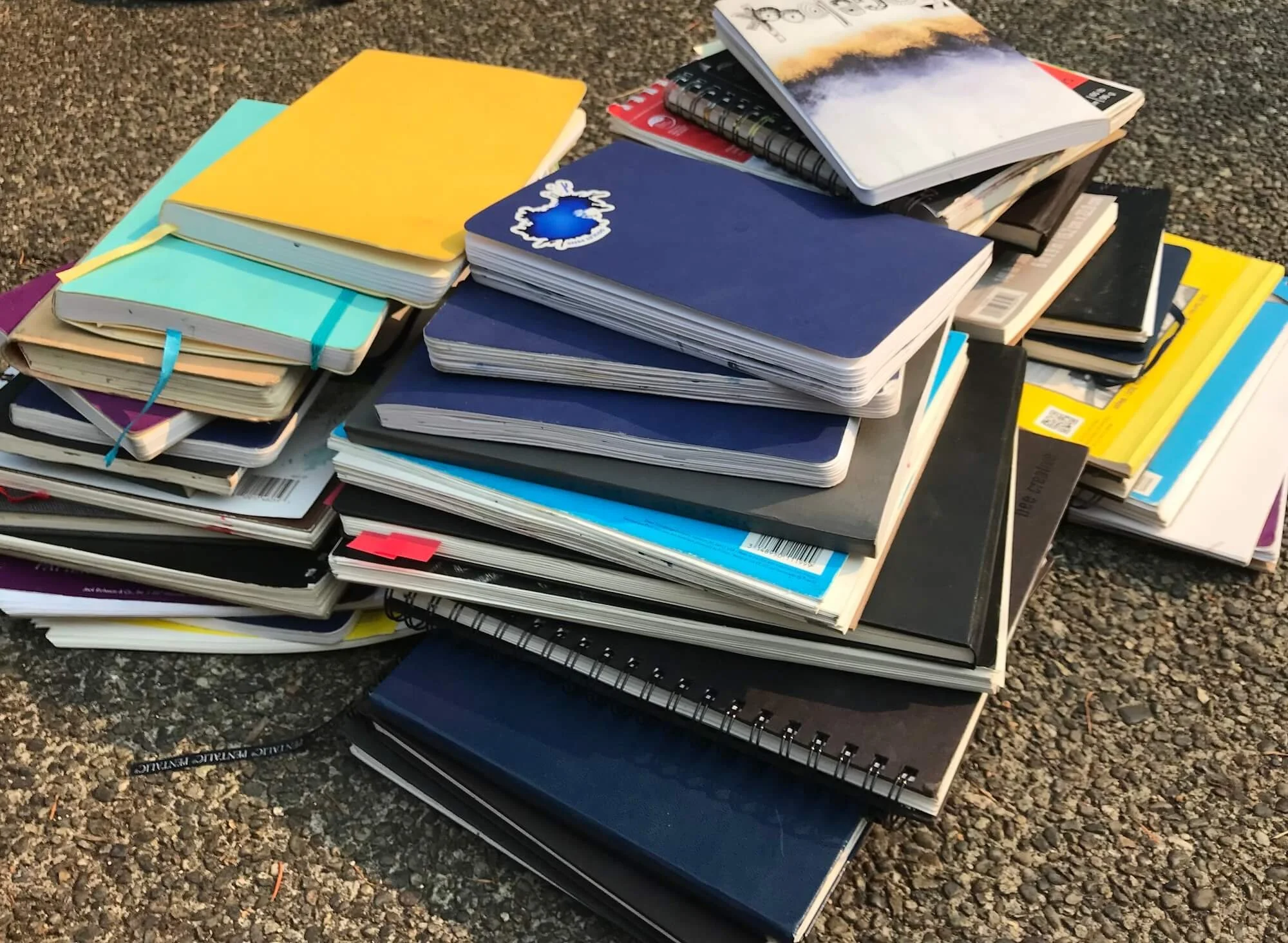How much drawing skill do I need to paint?
I love teaching in person again and have the best conversations with students, often those who arrive early and those who stay a little late. At the last class, a new student asked me how well she needed to be able to draw in order to paint. Such a great question! And since I am a lawyer by day I will answer in a lawyerly way: it depends!
What it depends on is what you want to paint. If you want to paint flowers or other organic objects, basic drawing skills will get you there. Organic objects are very forgiving, so they are excellent subjects for beginners. You can draw the flower or vegetable or other organic object, and you may not get it exactly right, but you can still make it look recognizable to your viewer.
If you want to paint inorganic objects in a still life –pitchers, vases -- you need a bit more drawing skill. We can still make a mug or wine glass look like a mug or wine glass, but if we don’t have a few technical skills and better control of our hand, our ellipses will be off and the mug may look like a curled slinky instead.
If you want to draw scenes while you travel, and be able to draw quickly, you need more drawing practice and technique. This is what I aspire to. I took classes on perspective so that I could learn what is happening to buildings and objects in the distance. I took classes on figures so that I could learn the proportions of the body to draw recognizable people in my scenes. I took classes on landscapes so that I could learn about proper color choices for mountains in the distance. I’m still not very good at any of these, because I have not had much practice. But I now know the rules, so the next step is just practice, practice, practice.
If you want to draw the faces of people you know and love, you have to draw exceptionally well. The reason is because, even after we learn the proportions of the face, there are lines that make this face recognizable. We have to see those lines and be able to get them in the right place in relation to the other lines to make this face recognizable.
I had often sketched and painted our dogs in my sketchbook, but hadn’t done a proper painting on heavy watercolor paper. When our beloved Poppy died in 2021, I tried for weeks to draw and paint her but was not getting it right. The problem was, I could not yet draw Poppy. I could draw something that looked like a dog, but it needed to look like this dog, not just to a stranger, but to me. I have not yet mastered her likeness.
To get the most out of your drawing journey, draw subjects in this order. When you get bored with the subject and want to continue your journey, move on to the next level of difficulty:
Organic objects
Still Lives or your meal.
Birds
Vehicles – surprisingly fun, and challenging!
Animals
Scenes
Scenes with people from afar
Body parts: Faces, etc.
Draw from life if you can. When you use photographs, use professional ones — from calendars, or Unsplash. Photographers have taken care of the light and darks and composition for you. The pictures are better and easier to discern. Your phone is a great tool because you can zoom in on details to see how to draw it. If you want to draw scenes, you will need some knowledge of perspective and foreshortening. If you want to draw people in your scenes, you will need some knowledge of the proportions of the human form.
I find I have more success painting if I paint at a drawing level one down from where I am confident drawing. Meaning, I enter a flow and looseness painting flowers because I am confident in my drawing of them (not dahlias! So many petals!). I have less confidence, and therefore less looseness and spontaneity, painting scenes.
Currently, I am drawing faces to further my drawing skills. I don’t set up with a pencil, and I don’t agonize. I take a juicy black pen on 70 lb. drawing paper and go for it with a line contour drawing. At this point in my artistic journey I do not want to paint faces (portraiture), but drawing faces substantially increases my drawing skills. When I am drawing on location, I can draw scenes much faster because of this practice. I have more accuracy in my drawings. My Secret Santa got me a book of photographs of faces so that I could draw without using my phone. Museum is a great app with fun face pictures. Now that I have been drawing faces from the book, I should go back and try Poppy again, too.
One more disclaimer to the “it depends” answer: many people trace. If you want to skip the drawing part and trace and then paint, go for it! You will still have a blast. You may find after a while that you want to paint your own drawings, but if not, trace away, paint like no one’s watching, and enjoy the process. You can use tracing paper, a light box, or better yet, put an image under your sketchbook page and against a window in daylight. There will be enough light to trace the image onto your paper. If you find at some point that you are having fun painting but bored by your subject matter, it may be time to paint scenes from your own life. My sketchbook is the best coloring book, and looking through the pages even years later brings a wash of memory and experience.
I was resistant to learning to draw at first. I started to learn after five or so years of frustrated painting when I heard a YouTuber say “you painting will never be better than your drawing.” I realized that I needed some basic drawing skills before I would be able to paint to my satisfaction. To get it, I made it convenient – I took a small sketchbook/journal so that I could draw on the go: while waiting for appointments, during the commute, during boring meetings, at a restaurant. I would draw anything in front of me – a sign, a commuter, my plate of food, salt and pepper shakers. Five or so years later, drawing has become one of my happy places, possibly even more so than painting. For me, the world outside disappears with even a five-minute drawing. Drawing, especially something complicated, sends my mind straight to the right brain (this line goes here, this line is this far below that line). Drawing gives my left brain a much needed respite. I walk away unsure how much time has passed and refreshed for the next challenge in my day. Drawing has become almost a daily activity for me.
Give it a try with my free 30 Days of Drawing or these videos and see what you think. Notice how you feel afterwards – not what your critical mind thinks of the results on the page, but how you feel in your body. With a little technique and encouragement, you will be amazed what you can do. I sure was! And my new students continually blow me away. And more importantly, we enjoy the process.
xoxo
Our beloved Poppy



















